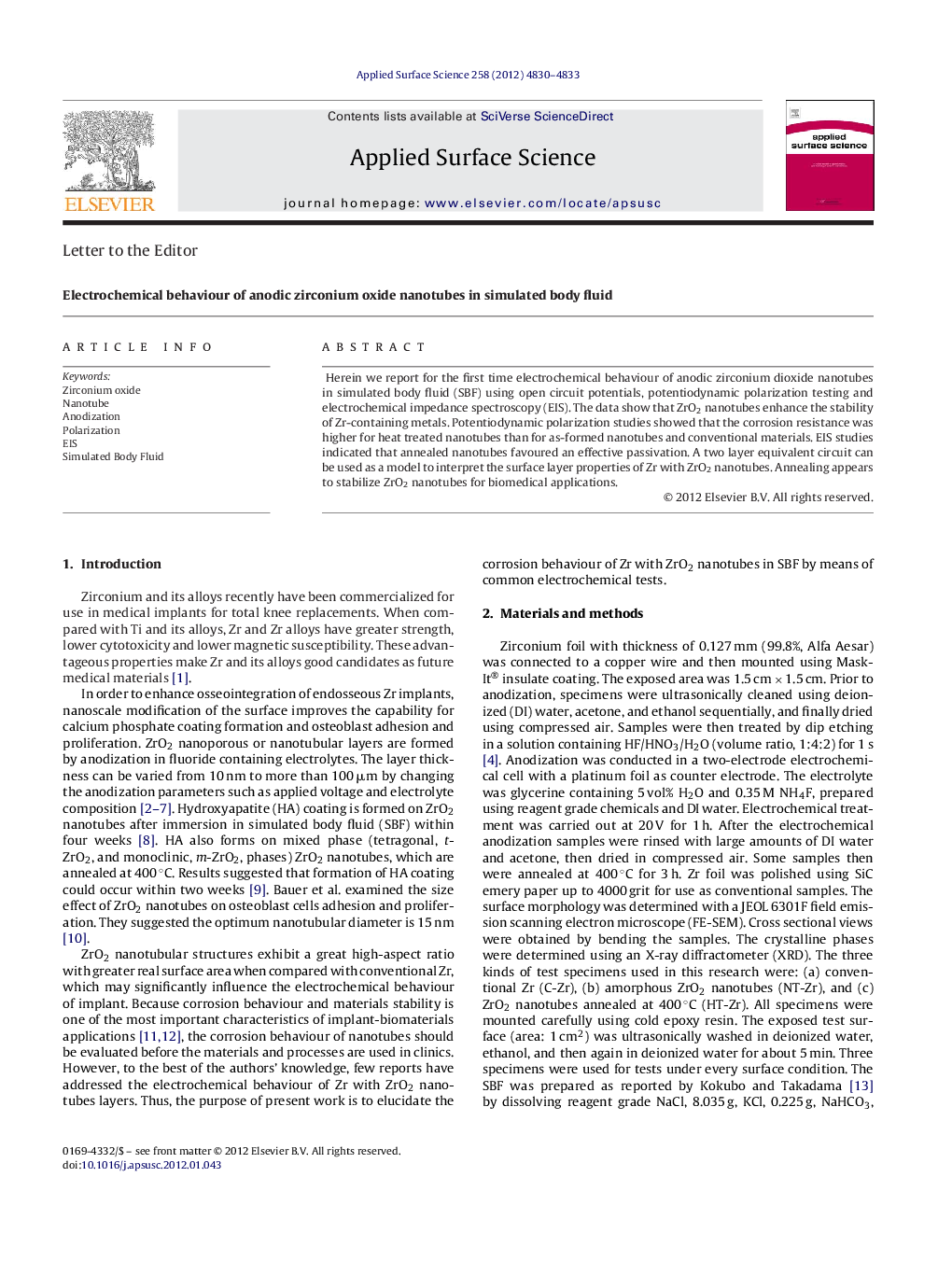| Article ID | Journal | Published Year | Pages | File Type |
|---|---|---|---|---|
| 5362254 | Applied Surface Science | 2012 | 4 Pages |
Herein we report for the first time electrochemical behaviour of anodic zirconium dioxide nanotubes in simulated body fluid (SBF) using open circuit potentials, potentiodynamic polarization testing and electrochemical impedance spectroscopy (EIS). The data show that ZrO2 nanotubes enhance the stability of Zr-containing metals. Potentiodynamic polarization studies showed that the corrosion resistance was higher for heat treated nanotubes than for as-formed nanotubes and conventional materials. EIS studies indicated that annealed nanotubes favoured an effective passivation. A two layer equivalent circuit can be used as a model to interpret the surface layer properties of Zr with ZrO2 nanotubes. Annealing appears to stabilize ZrO2 nanotubes for biomedical applications.
⺠Electrochemical behaviour of anodic zirconium dioxide nanotubes in simulated body fluid is firstly reported. ⺠Corrosion resistance was higher on annealed ZrO2 nanotubes than as-formed ZrO2 nanotubes and conventional Zr. ⺠EIS studies indicated that annealed nanotubes favored an effective passivation. ⺠A two layer equivalent circuit can be used as a model to interpret the surface layer properties of anodic ZrO2 nanotubes. ⺠Annealing appears to stabilize ZrO2 nanotubes for biomedical applications.
